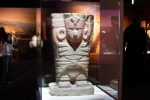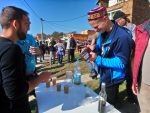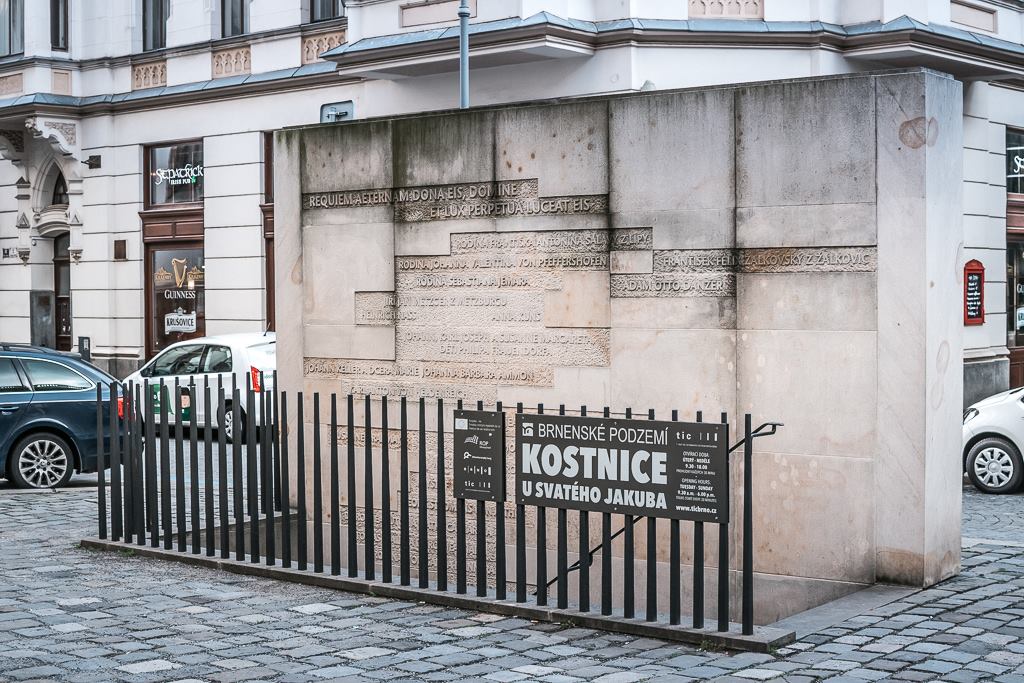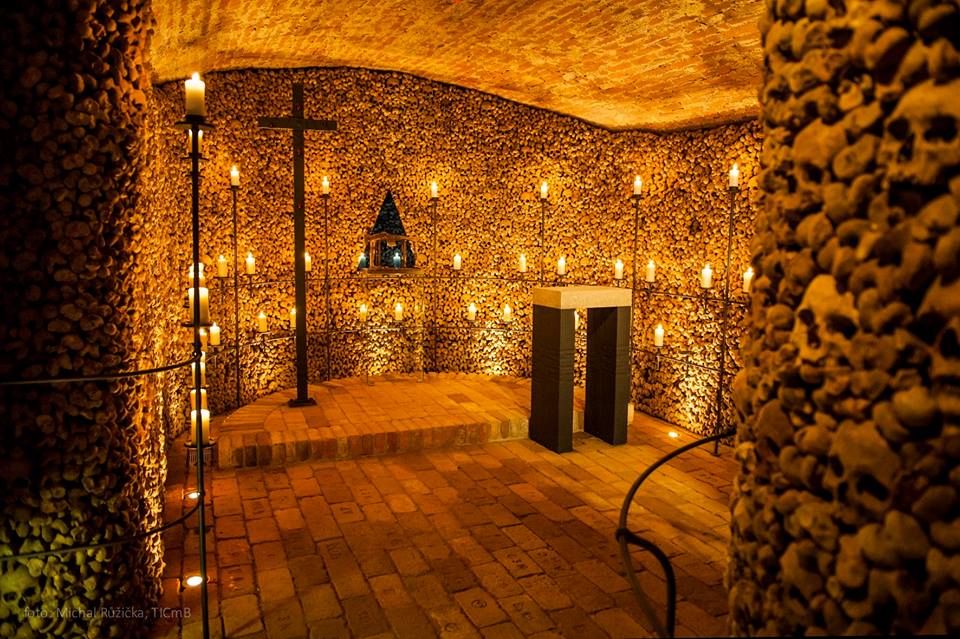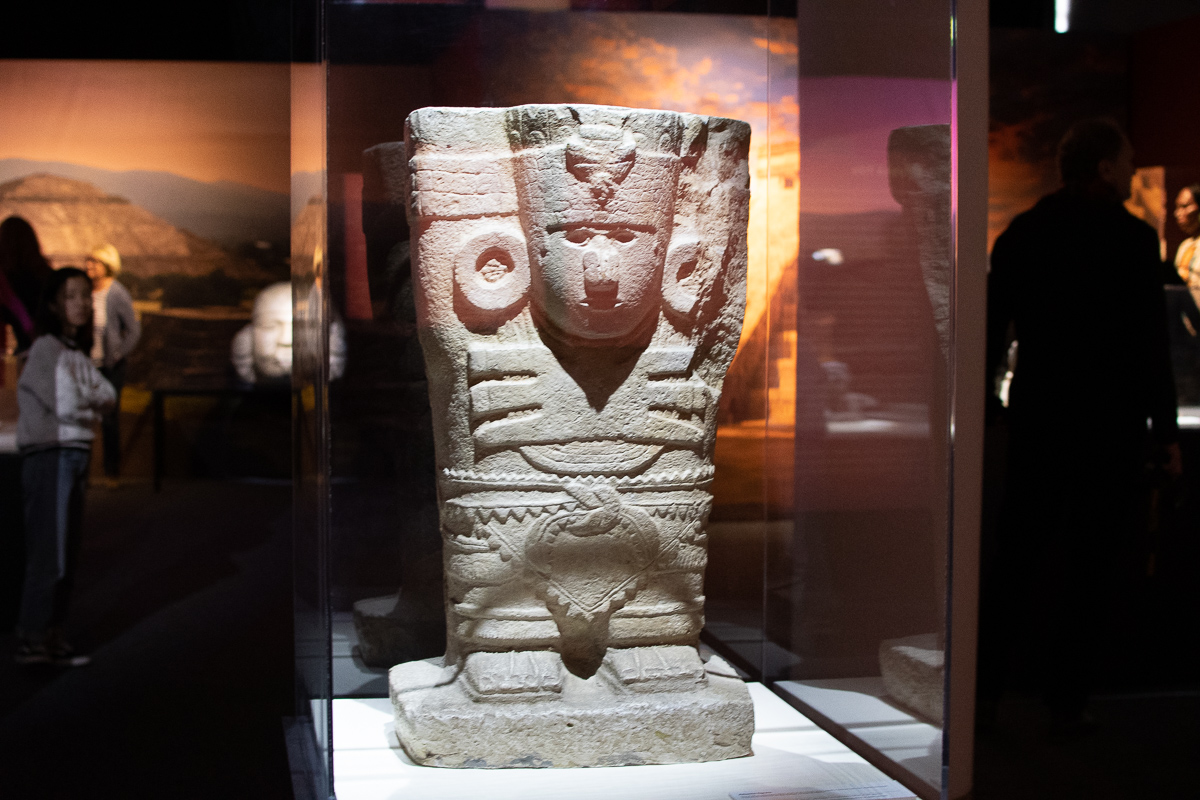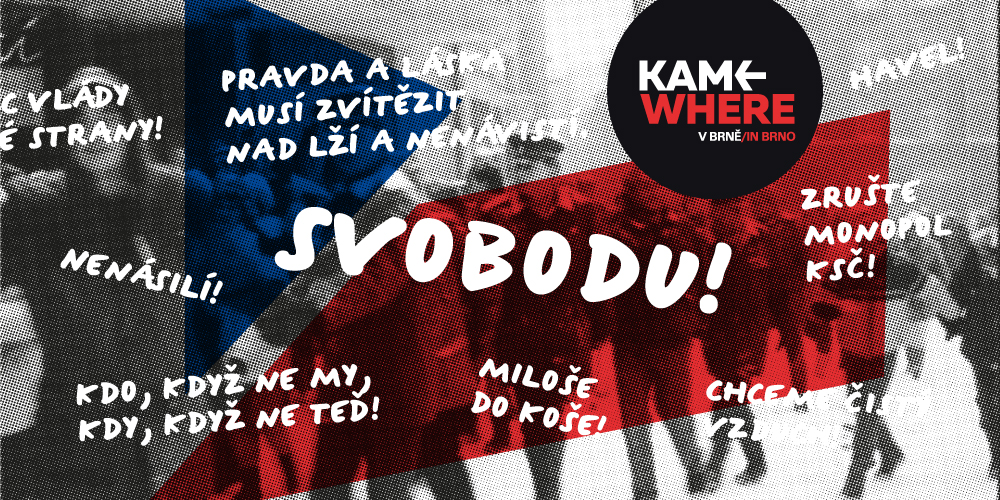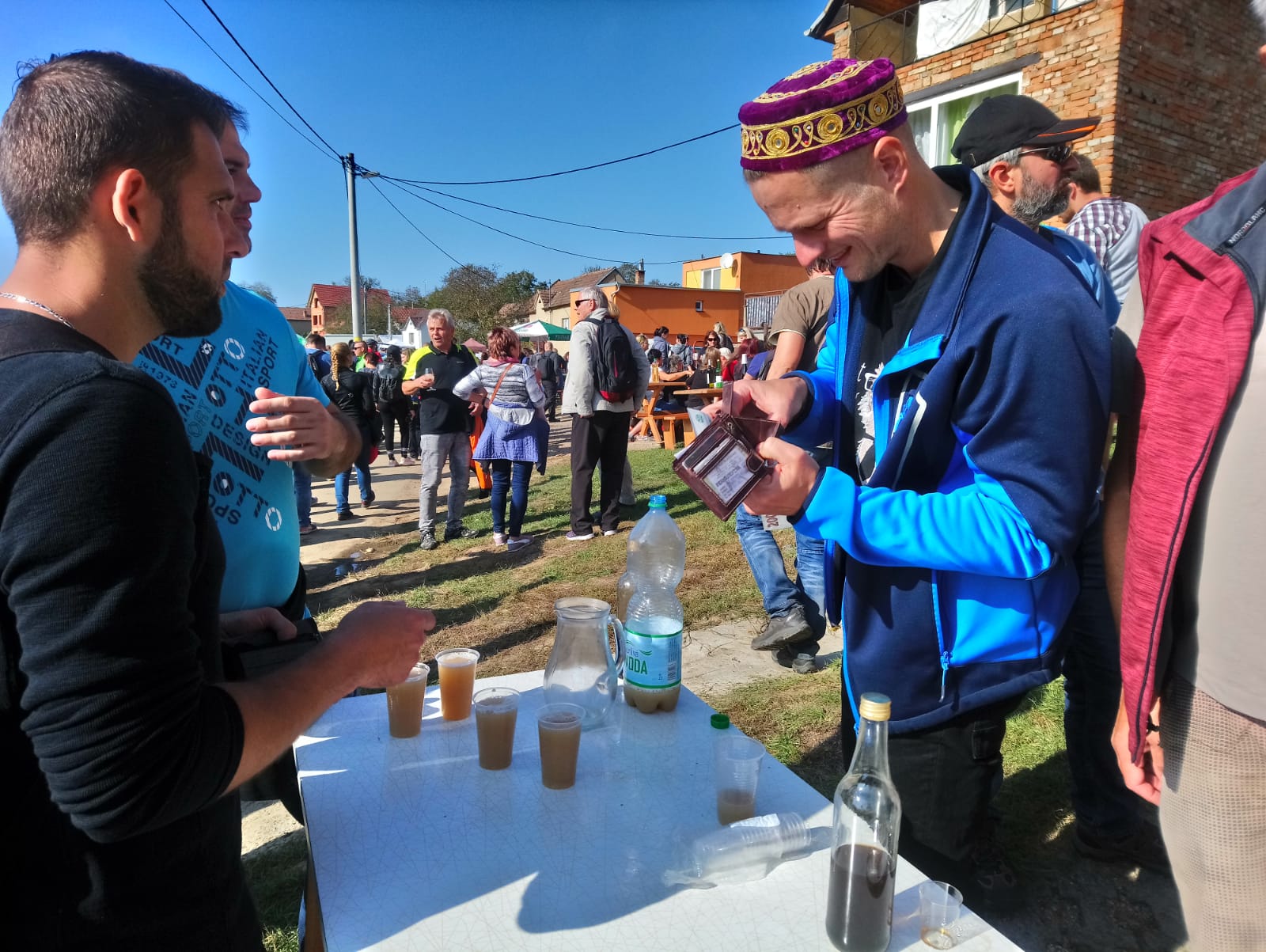The Ossuary under St. James Church [Kostnice u svatého Jakuba] in Brno is the second largest underground ossuary in Europe, after the Catacombs of Paris. Photo credit: Casadei Graphics.
Brno, Nov 25 (BD) – Tourists in Brno – at least those up for spine-tingling experiences – have the opportunity to visit one of the biggest ossuaries in Europe, the tragic and elegant collection of human bones under the Church of St. James in the historic centre of the city. The Ossuary has been open to the public since 2012.
Historical Insights
Soon after the establishment of the churchyard, it became full to capacity, as the city walls prevented its extension. This situation required the regular removal of remains from their graves every 10-12 years to make space for new corpses. The older remains were thus moved to special underground areas known as ossuaries.
“Anthropological analyses prove that the skeletal remains belong to the victims of medieval plague and cholera epidemics, the Swedish Siege, and the Thirty Years’ War.”
The ossuary in Brno, estimated to contain the bones of over 50,000 people, was discovered during an underground survey of Brno in 2001. The bones date back to the 13th century when a cemetery was located adjacent to the church. Anthropological analyses prove that the skeletal remains belong to the victims of medieval plague and cholera epidemics, the Swedish Siege, and the Thirty Years’ War, among others. It is a matter of debate which of those was the biggest catastrophe for Brno. The Thirty Years’ War was responsible for the loss of millions of lives in 17th century Europe, and the epidemics recurred frequently, leaving countless victims behind.
“The Plague can be spread for 300 years after the death of the infected person. At that time, bodies were buried just a few inches under the ground, which did not exactly shield the living from illnesses.’’
In 1784, Joseph II closed the churchyards for reasons of hygiene. On his orders, the remains from the graves were moved into a crypt, and the churchyard wall was torn down. As part of this process, the surroundings of the churchyard were covered with headstones. Zuzana Schmidtová, the Coordinator of the Ossuary, explained the reasons for closing the cemetery: ‘‘The Plague and cholera were infectious even if the infected person was dead. The Plague can be spread for 300 years after the death of the infected person. At that time, bodies were buried just a few inches under the ground which did not exactly shield the living from illnesses. Furthermore, the smell was not so pleasant around the cemetery, and sometimes animals dug up dead bodies, so you can imagine how it must have looked back then. So, Joseph II closed these cemeteries for reasons of hygiene and relocated them beyond the city walls where they did not bother anyone so much.’’
Photo credit: Michal Růžička. Courtesy of The Ossuary.
The names and stories of the deceased remain unknown until today. Schmidtová said: ‘‘Unfortunately we have almost no data about who was buried here and why. These documents were stored at the church office, but disappeared sometime around World War II; we are not entirely sure.”
No Ghost Stories
The character and history of the place make many curious about its legends and supernatural phenomena. Schmidtová, however, has to let these romantic souls down: ‘‘There is no legend concerning the ossuary. It was just a burial place and storage facility for bones. Sometimes, visitors ask if any extraordinary events happen there, but so far we have never experienced anything like that.”
Brno Ossuary Today
Today, the Ossuary is one of the most visited tourist attractions in Brno and a place of reverence. Statistics from the ossuary show that 35,802 people visited the ossuary in 2017, and this year the number has already reached 34,195 (to the end of October). In 2012, the first year of opening, the Ossuary saw 21,589 visitors.
The attraction is in high demand, with visitors from all over the world, and information materials are therefore available in English and several other languages. For groups of five and more, the Ossuary recommends booking in advance, as capacity is limited to 25 people.
Get the news first! Sign up for free to our daily newsletter here. Top stories of the day in your mailbox every morning.
